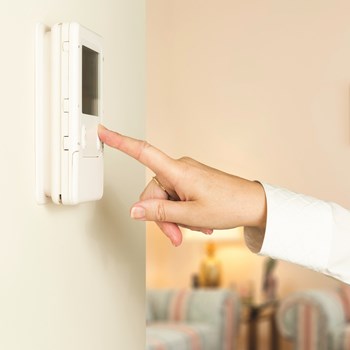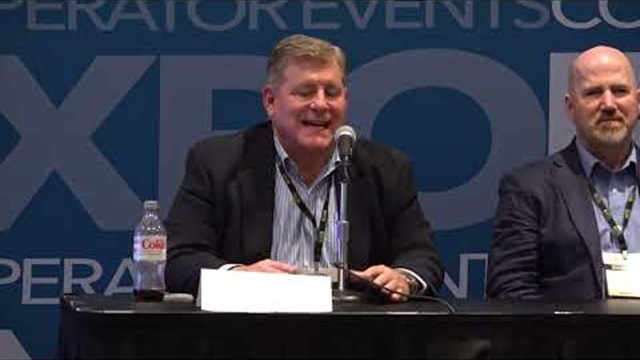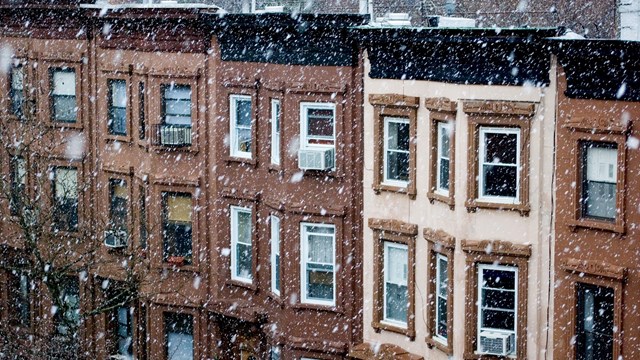
While state and local governments implement energy-saving incentive programs and more buildings are either being retrofitted or built with next-generation energy-saving technology, the habits of unit owners and shareholders still impact a building’s bottom line on energy costs. This is particularly true during the colder months, when lowering thermostats, switching off lights, and not opening windows while the heat is on are obvious ways to cut energy costs though these tactics are not always observed by residents.
People are creatures of habit for better or worse. That’s why getting the word out to residents and encouraging them to develop good energy-use habits can be tough: folks don’t always recognize what’s not already on their radar screen. So boards and property managers must lead the effort, by researching ways to reduce energy consumption and by encouraging residents to conserve—and in so doing save themselves money. The task may seem big, but it’s basically just the management team doing its homework and communicating info to residents; following up with reminders and new information regularly; and planning for future energy efficiencies.
Manageable though it may be, this is not a task that can be accomplished and forgotten, since the battle to cut waste and improve efficiency is ongoing and unending. So, board members and property managers would be wise to consult a variety of resources before devising an attack plan to eradicate energy inefficiencies. The benefits—and savings—are in the details.
Seeing Is Believing
Boards and managers can help to educate residents about saving energy, but how they do it should depend partly upon the makeup of the building’s residents and how they pay for their energy usage. Individual payers of utilities, as opposed to those paying utilities through a general maintenance fee in which the utilities are not itemized, may be motivated differently.
“Who’s paying the utilities? Is the co-op or condo owner paying their own utilities or not?” asks Jill Wasser, a consumer program specialist for the New York State Public Service Commission. “If utilities are being paid through a maintenance fee, maybe the residents are not seeing the cost of wasting energy. People will pay attention if you say, ‘Your maintenance fee will drop if we install high-efficiency lighting.’”
Providing tips for saving on energy use in the building’s monthly newsletter is a good start. Giving residents better reasons to follow those tips is important, too. In the case of buildings in which residents pay for utilities through a maintenance fee, a little math may be in order, to motivate residents.
“If energy costs are not itemized in the maintenance costs, maybe it’s time to do so,” Wasser says, adding that showing residents how much energy costs are siphoning off their pocketbooks, and explaining how much they collectively are spending on those costs, can give them incentive to change their habits. It also can encourage them to plan on future improvements they know will save energy costs—such as new windows or a new boiler or a new roof—even when earmarking that money for improvements could hurt a little, financially speaking.
In addition to giving residents actionable tips for saving energy, part of the management team’s challenge could be overcoming the deep-rooted beliefs and habits of apartment dwellers.
A widespread “renter’s mentality”—the mindset of residents who are used to renting or living in an apartment but who are maybe a little fuzzy about the differences between rental, co-op and condo living and the responsibilities of shareholder/owners—can be a problem that delays putting energy-saving policies into regular practice. Residents can get over that hurdle and start reaping the benefits of conservation by knowing not only how much they are saving themselves and fellow residents by doing so, but also by understanding how it helps the environment to take such actions as turning off lights when not in use.
“Here’s some more good news: for every 1,000 kWh that can be saved, a condo property will prevent roughly 1,119 pounds of CO2 from being emitted into the atmosphere from electricity generation,” says Fritz Kreiss, president of Alternative Utility Services, Inc., an energy use consulting company with offices in Wisconsin, Illinois and New Jersey.
“Even better, energy savings can help in the property’s sustainability promotion, which is increasingly more important to people looking to buy a condo. Lowering the energy operating costs could mean the difference in which building someone buys,” adds Kreiss, who also is chief executive officer and president of Community Green Energy, a renewable energy project development and finance company.
AUS is a nationwide licensed energy aggregator and consulting company. Kreiss has been involved in energy procurement and the field of sustainability for over twenty years, and has expertise in alternative energy development. Consulting firms like AUS can help management teams analyze their community’s energy needs, and also help them make long-term plans to improve the efficiency of the community’s heating, cooling, electrical and plumbing systems.
“We aggregate and educate the condo owners about what can be done and the fact that we can get a negotiated discount pricing on the products and installations. We do the same thing for communities that do group solar purchasing to reduce the cost of residential solar,” Kreiss says. “The key is to promote how many people are participating and how much they are saving. The electric usage for a 700-unit condo can equal the usage for all of the common areas depending on how cooling and heating is done in the building.”
For some boards, it might be tempting to form a committee to study and disseminate energy use information among residents, like a design or admittance committee disseminates info, but all experts don’t agree that this is prudent. While some people might think a committee is a simple solution to a problem of oblivious residents not watching energy use, others say it could cause problems.
“I think a committee would be counter-productive,” says Scott Schnurr, chief executive officer of DRF Trusted Property Solutions, an energy consultant in Plainfield, Illinois. “Once you get the board sold on the idea for energy savings, you measure historical usage.”
Others feel the opposite—they say raising awareness on the issue can build consensus. And when it comes to building improvements that could cost residents more money, delivering the message properly is everything.
“The condo board is looking at the costs and what can be done financially, but having a green committee helps to have a different perspective and can often gain more ongoing support for the change of attitude, like turning off the lights when you leave a room. They can also help to spearhead a change in the individual owner’s eyes about what can be done within their condo,” Kreiss says. “Even a group buying program for condo owners could be coordinated to lower the cost of low flow toilets, LED lighting, occupancy controls and window films.”
Technology that’s now available makes it easy to meter every single condo, which can result in savings as residents recognize their usage and pare back on it. The cost of such systems often depends upon the number of apartments in the building, as well as the types of fixtures in them. These systems also can detect leaks, and will send a notification when a water leak is caught.
“It works in part because whenever the residents realize they’re being billed for all of the water they’re using, then they change,” Schnurr says.
Devising Savings Plans
Board members, property managers and residents can learn more about energy-saving incentives and ways to cut down on their own energy spending through information provided by utilities, non-profits, government agencies, and consultants. For example, in New York, the New York State Public Service Commission gives public talks, and provides information and energy saving tips through its website. Other similar entities and industry organizations for co-ops and condos in nearly every state can help in this regard, too.
Boards of directors and other building residents must be their own strongest advocates. Shoppers must be smart, and smart shopping means getting your hands dirty with a little research.
“There are alternative energy suppliers to take into consideration,” Wasser says. “It’s really about developing your strategy—which could include renewable energy. This work of searching for the right solutions never really ends.”
Fortunately, the Internet has made gauging the footprint of energy providers achievable, with the help of the right website.
The Power Scorecard grades, according to their effects on the environment, the types of generation resources used to produce electricity, thereby giving consumers information critical to choosing the “greenest” energy sources. It was created by a group of six well-known environmental organizations and provides clear, accurate information to help consumers understand differences in environmental impact of different electricity products. With this guide, consumers can choose resources having the smallest environmental impact.
In addition to a variety of websites through which pertinent energy-saving info is available, new tools on the market also use the latest technology to monitor energy use. A variety of submetering solutions are available for residences, and some of these tools could be helpful in decreasing energy use in multifamily dwellings. One of these tools is provided by Pennsylvania manufacturer H2O Degree, which installs two-way wireless mesh submetering systems that communicates building control and monitored data for multifamily buildings. Such information can include notifications when there is a leak in a water line in an apartment—specifically pinpointing the source of the problem.
Benchmarking the building through ENERGY STAR, which has a rebate program, followed up by least an ASHRAE Level 1 audit, is a great start. This does have a cost involved, but the New York State Energy Research & Development Authority (NYSERDA) oftentimes has incentives that covers the cost of the audit,” Kreiss says.
Founded in 1894, ASHRAE (the American Society of Housing, Refrigerating and Air Conditioning Engineers) is dedicated to spreading use of sustainable technology for the built environment, focusing on building systems, energy efficiency, indoor air quality, refrigeration and sustainability within the industry.
Working with a reserve specialist and setting up a viable capital reserve plan is prudent, and boards of directors also should work with a consultant to find short-term energy efficiencies, while planning for long-term savings to be achieved through future equipment upgrades and other capital improvements. But first, an energy use assessment must be done, followed by creation of a target list of areas in which to save on energy use.
The board can develop a plan for reduction of energy use that will involve shareholder and owners, too. But it must be a real plan, informed and guided by professionals. Such a plan begins with an overall assessment of the building’s energy use; identification of opportunities for savings; and identification of financial incentives and a financial worklist for the plan.
“The residents already are spending the money, they’re just spending it on utilities,” Schnurr says. “As a board member, you have a choice to spend money on a return on investment such as a capital improvement project increasing energy efficiency, or spending on a cost.”
Jonathan Barnes is a freelance writer and a frequent contributor to The Cooperator.









Leave a Comment